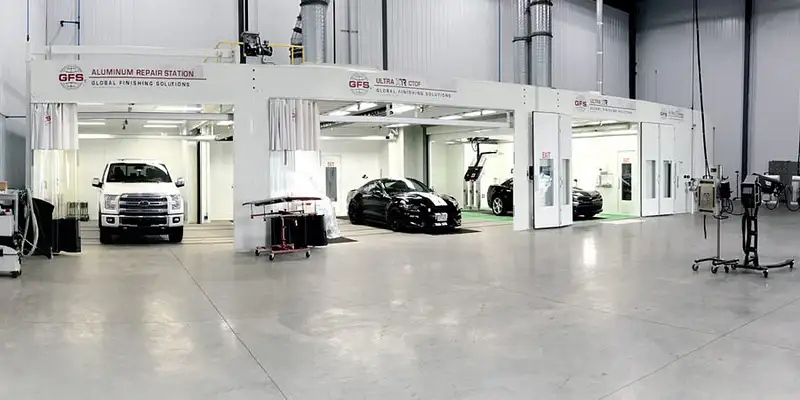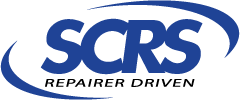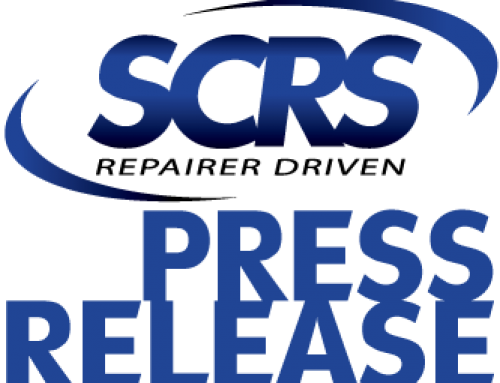Mechanicsville, Virginia, August 17, 2022 – On Monday, August 22nd, the Society of Collision Repair Specialists (SCRS) will begin a week-long research project in coordination with the major North American refinish companies to study the delta between the time necessary to perform a full refinish on a panel, and the time necessary to blend the panel.
Blending is defined as the application of color to a portion of an undamaged adjacent panel for the purpose of facilitating the appearance of color match into the area, and then clear coat is applied to the entire blended panel.
Currently, the estimating databases produced by Audatex, Mitchell, and CCC (MOTOR) establish unique refinish values for collision parts; and each estimating product also identifies a formula for blending as 50%, or 0.5 per refinish hour, of the unique full refinish operation value they developed.
“As an organization, we’ve contended for a long time that blending a panel takes more skill and near-equal amounts of time as it does to apply refinish across an entire outer surface of a panel,” shared Aaron Schulenburg, SCRS Executive Director. “Our members have similarly expressed to us that the 50% formula of the full refinish value is not reflective of the necessary tasks to prepare, apply product and facilitate an invisible transition. We’ve routinely communicated this on behalf of the industry to each of the information providers, and yet the 50% formula persists.”
SCRS has organized for AkzoNobel Vehicle Refinishes, Axalta Coating Systems, BASF Automotive Refinish, PPG Industries and Sherwin-Williams Automotive Finishes to participate in a project which analyzes the delta of time and operations between the full refinish of an exterior panel, and the blending of the same panel.
The comparative studies will be conducted at the Global Finishing Solutions (GFS) Center for Excellence, at the GFS headquarters in Osseo, Wisconsin. The innovative facility features an automotive refinish training center, as well as a separate space dedicated to technical product training.

Each participating refinish company has agreed to donate and provide their own basecoat, clearcoat, hardeners and thinners, as well as allied products, abrasives, spray guns, respirators to perform the study.
Additionally, each refinish company will provide their own technical representatives to perform the panel preparation and refinish application in accordance with the necessary steps as documented by manufacturer procedures.
The study will be conducted using three paint variations. A white solid, a silver metallic and a white tri-coat; all selected based on their popularity in the 2018 Ford F-150 vehicle’s color options. The 2018 Ford F-150 was selected as the test subject vehicle based on parts availability and its position as the most appraised truck in 2021, according to data provided by CCC.
The study will use new OEM parts, donated by Ford Motor Company, including Hoods, RT Fenders and RT FRT Door Shells for the 2018 Ford F-150.
Part types were selected after review of data from Mitchell detailing the most common blend panels.
SCRS has also employed DEKRA North America to serve as a third-party auditor to validate the protocol and process adherence. DEKRA will validate that the raw data aligns with reported values.
DEKRA is the world’s largest unlisted expert organization in the TIC (testing, inspection, certification) industry.
3M has also loaned an additional Festool Automotive Sanding System, so that each work area is equipped with the options, and has donated additional part stands to be used in the study and then passed along to educational programs along with other components donated by other companies for the study.
“To our knowledge there has never been such a comprehensive industry-wide research project to evaluate blend requirements in contrast to full refinish operations, that has included all the major refinish manufacturers,” added SCRS Chairman, Bruce Halcro. “SCRS is not looking to document or challenge the unique refinish values established by the information providers, but rather to study the percentage-based formula they’ve all selected, and the difference between those refinish operations and a corresponding blend operation on the same panel. We are studying the delta between the two, and if the time savings to blend is as significant as the IPs suggest it is.”
Research results are anticipated to be made available by the SEMA Show, in November 2022.
At the conclusion of the study, designated items will be donated to Chippewa Valley Technical College, through the Collision Repair Education Foundation (CREF).
Support this and other content from SCRS through membership, by contacting the SCRS office at info@scrs.com or visit us online at www.scrs.com/join-scrs.














